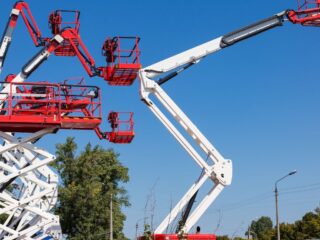
It may seem to many that electric cars are gradually conquering our world and are a modern invention. However, in reality, such vehicles served people about two centuries ago. Of course, the cars of that time were very different from those we see today, but they still had a working electric motor in their design. Let’s go back in time together and follow the evolution of electric cars.
19th Century
After people could design an electric motor, many engineers began their attempts to create an electric car. It is still unknown precisely who became the first in this matter and which of the created vehicles can be called a car with an electric motor. In 1828, A. Jedlik designed something similar to a car that moved using electricity. This was a primitive design, so not all modern engineers consider it an electric car. The same situation is with the invention of R. Anderson, S. Stratingh and other engineers of the mid-30s.
Models that became more similar to modern electric cars appeared in 1859. At this time, batteries were invented, which made it possible for electric vehicles to travel not 100-200 meters, as was previously the case, but several kilometers. In 1881, it was possible to modernize batteries and make them more capacious significantly. Immediately after this, G. Trouve presented a new version of the electric car, which became the first vehicle equipped with its energy source. Three years later, the famous British inventor T. Parker designed his version of an electric vehicle. The invention was quite successful, but it was never patented.
At the end of the 19th century, the electric motor began to be used wherever possible. It was installed on electric locomotives, trams, boats, bicycles, cabs and even dog carts. The leaders in this direction were the British and the French. Important inventions were also made in Germany and the USA. Every year, more attention was paid to vehicles with an electric engine, which provided the opportunity for further development.
20th Century
With the beginning of the new century, the popularity of electric motors has increased significantly. This became possible due to the vast number of advantages they provided. The main one was getting rid of loud noise, excessive vibrations and the unpleasant smell of gasoline, which were a severe problem then. Also, unlike fuel models, electric cars did not require manual engine starting. Many positive qualities made it possible for manufacturers of such vehicles to sharply increase their cost, which is why only the wealthiest people could buy fashionable cars.
Due to the high price of electric cars, Americans have become their main buyers. By 1910, more than 30 thousand people in the country owned such vehicles, and the same number wanted to buy them. The increase in demand led to the emergence of many companies that produced such cars. Most of the models produced had a power reserve of 115-130 kilometers, which was a good result. During the period between the two world wars, the development of electric cars was slow. Some companies merged and created new production facilities, others closed, and others tried to work independently. The main sign of development was a gradual increase in maximum speed. Updated electric cars of the 30s and 40s could accelerate to 75-90 km/h and maintain this speed for a long time.
After WWII ended, the demand for electric cars increased, so their production proliferated. Scottish Aviation Scamp, General Motors Electrovair, Enfield 8000, and AMC Amitron stood out among the most exciting models of that time. Many cars were not put into mass production, so their number was minimal. 1971, an electric-powered vehicle was used during the Apollo 15 moon landing. This event increased interest in electric cars and allowed them to develop faster. In the early 90s, people in the United States began to think seriously about the environment. It was decided to popularize electric cars to reduce harmful emissions into the atmosphere. Immediately after this, many well-known manufacturers presented models for the standard population. The Ford Ranger EV, Chrysler TEVan, GM EV1, Nissan Altra EV, Honda EV Plus, Toyota RAV4 EV and others were created.
21th Century
At the beginning of the 21st century, the first all-electric car appeared and went into mass production. The Tesla Roadster had a range of 320 km and could accelerate to high speeds. Its good sales performance led many other automakers to begin mass production of their models. For example, in 2009, the Mitsubishi i-MiEV appeared; in 2010 – Nissan Leaf, Peugeot iOn, Citroën C-Zero, Renault Fluence ZE; in 2011 – Volvo C30 Electric, Ford Focus Electric; in 2012 and 2013 – Tesla, Model S, BMW ActiveE, Chevrolet Spark EV, Volkswagen e-Up! And others. These are just a few of the cars that began to be mass-produced in factories worldwide.
Companies from the USA and Japan are expected to be the leaders in the number of electric cars sold. The Germans and French also achieved success. Every year, the popularity of models with an electric motor increases. This was facilitated by the development of appropriate infrastructure and the desire to get rid of environmentally unsafe vehicles. Each new version of electric cars has become more advanced. Their range and maximum speed increased, and the available functionality expanded.
From 2015 to 2017, well-known models such as Chevrolet Bolt EV, Renault Zoe, BMW i3, BYD e5, Tesla Model X, Hyundai Ioniq Electric, and Tesla Model 3 appeared on sale. All of them became popular with consumers and helped manufacturers earn good income. In the 1920s, the growth of the global electric car market continued. Models such as Tesla Model Y, Dodge Charger Daytona EV, updated Nissan Leaf, Volkswagen ID Buzz, and Kia EV9 won the hearts of drivers and became their favorites. Today, everyone can find new, wrecked Dodge Chargers for sale and other popular vehicles. All of them are filled with modern developments that make any trip more accessible, comfortable and safer.
Electric cars are not a modern invention. They have a history of almost two centuries, during which they have been modernized many times and gradually become better. The models available today have absorbed all the best from the cars of the past and have become indispensable assistants for modern people. Nevertheless, the history of the development of electric cars continues, and shortly, we will open a new chapter. What it will be like is still unknown, but we can confidently say we will have something to write about.
Read more at https://www.clearvin.com/
Title: History of electric cars. Why Tesla is just a successor.
Description: The history of electric cars: Why Tesla is just a follower. The history of the world’s first electric cars. The development of electric transport in the 19th and 20th centuries. The modern history of electric cars and their modernization in the 21st century.













